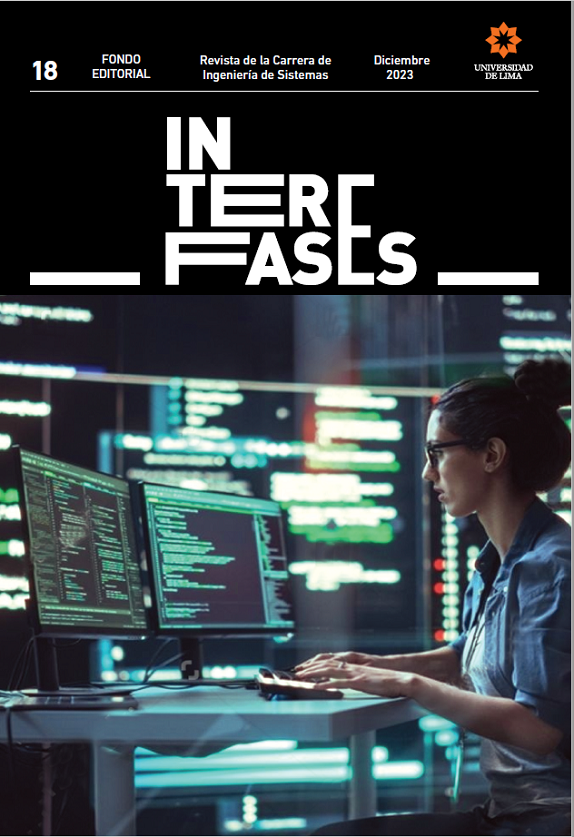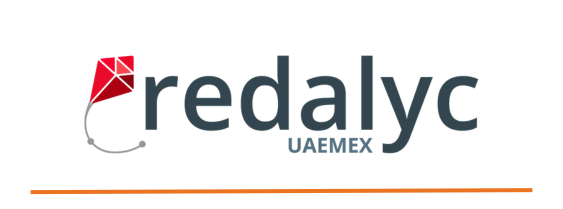Encourage Women to Remain in Secondary Education and Create Opportunities for STEM Careers
DOI:
https://doi.org/10.26439/interfases2023.n018.6606Keywords:
public policies, gender inequality, secondary education, school dropouts, STEM careersAbstract
In this study, we intend to understand how public policies can mitigate the complex challenges linked to gender inequality in high school in Brazil. The role of public policies in dealing with gender issues is discussed, with a focus on high school, a stage that makes it possible to overcome challenges faced by women in their study trajectories, especially in STEM careers (Science, Technology, Engineering and Mathematics).
Downloads
References
Anuto, T. F. (2013). Evasão escolar no ensino médio: possíveis inferências para mudar esse cenário. Universidade Tecnológica Federal do Paraná.
Brasil. (2013). Institui o Estatuto da Juventude e dispõe sobre os direitos dos jovens, os princípios e diretrizes das políticas de juventude e o Sistema Nacional de Juventude – SINAJUVE. https://www.planalto.gov.br/ccivil_03/_ato2011-2014/2013/lei/l12852.htm
Censo da Educação Básica 2022: notas estatísticas. (2023). Instituto Nacional de Estudos e Pesquisas Educacionais Anísio Teixeira | Inep. https://www.gov.br/inep/pt-br/centrais-de-conteudo/acervo-linha-editorial/publicacoes-institucionais/estatisticas-e-indicadores-educacionais/censo-da-educacao-basica-2022-notas-estatisticas
Chikhungu, L., Kadzamira, E., Chiwaula, L., & Meke, E. (2020). Tackling girls dropping out of school in Malawi: Is improving household socio-economic status the solution? International Journal of Educational Research, 103(101578), 101578. https://doi.org/10.1016/j.ijer.2020.101578
Dahal, T., Topping, K., & Levy, S. (2019). Educational factors influencing female students’ dropout from high schools in Nepal. International Journal of Educational Research, 98, 67-76. https://doi.org/10.1016/j.ijer.2019.08.010
Dore, R., & Lüscher, A. Z. (2011). Permanência e evasão na educação técnica de nível médio em Minas Gerais. Cadernos De Pesquisas, 41(144), 770-789. https://doi.org/10.1590/s0100-15742011000300007
Fontoura, N. de O., & Pinheiro, L. S. P. (2009). Síndrome de Juno: gravidez, juventude e políticas públicas. In Castro, J. A. de, Aquino, Luseni Maria C. de, & Andrade, Carla Coelho de (Eds.), Juventude e políticas sociais no Brasil (pp. 149-165).
Gatsi, R., Omidire, M. F., & Human-Vogel, S. (2020). Conceptualization of the Premature School Exit Phenomenon in Mashonaland Region of Zimbabwe: The Voice of Early School Leavers. Journal of Black Psychology, 46(2-3), 228-260.
Gil, A. C. (2022). Como elaborar projetos de pesquisa (7.ª ed.). Atlas.
Lima, W. G. de, Maciel, C., Casagrande, A. L., Sassi, S. B., & Nunes, M. F. A. F. (2022). STEAM, Gênero e Ensino Médio: ações da extensão em parceria com o Meninas Digitais Mato Grosso. En Anais do XVI Women in Information Technology (WIT 2022).
Maia Vidal, E., Gonçalves Costa, A., Sírio Oliveira, A. G. L., & Nunes Estrela, E. (2022). Mobilizando Jovens para o Ensino Superior: O Caso do Ceará, Brasil. Revista iberoamericana de evaluación educativa, 15(1). https://doi.org/10.15366/riee2022.15.1.007
Mau, W.-C. J., & Li, J. (2018). Factors influencing STEM career aspirations of underrepresented high school students. The Career Development Quarterly, 66(3), 246-258. https://doi.org/10.1002/cdq.12146
Moura, D. H., Lima Filho, D. L., & Silva, M. R. (2015). Politecnia e formação integrada: confrontos conceituais, projetos políticos e contradições históricas da educação brasileira. Revista Brasileira de Educação, 20(63), 1057-1080. https://doi.org/10.1590/s1413-24782015206313
Parent In Science. (2023). Parent In Science. https://www.parentinscience.com/
Ribeiro, K. S. F. M., Maciel, C., Bim, S. A., & Amaral, M. A. (2020). Gênero e tecnologias. In Maciel, Cristino, & Viterbo, José (Eds.), Computação e Sociedade (p. 270). Cuiabá-MT: EdUFMT Digital.
Santana, T. S., Assis, I. T. B., Braga, R. B., & Louzada, N. C. (2017). A importância de atividades de empoderamento feminino como forma de minimizar a evasão das mulheres nos cursos de Tecnologia da Informação. Anais do Women in Information Technology (WIT).
Shoshana, A. (2020). “I live one day at a time”: Future orientation among Muslim high school dropouts in Israel. Children and Youth Services Review, 119. https://doi.org/10.1016/j.childyouth.2020.105605
Silva Filho, R. B., & Araújo, R. M. D. L. (2017). Evasão e abandono escolar na educação básica no Brasil: fatores, causas e possíveis consequências. Educação Por Escrito, 8(1), 35. https://doi.org/10.15448/2179-8435.2017.1.24527
Silva, J. V. F. da, & Lopes, Y. D. V. (2022). A pobreza menstrual como fator de violação de direitos humanos: um olhar para adolescentes em ambiente escolar. https://repositorio.animaeducacao.com.br/handle/ANIMA/22714
Souto, D. C., & Souto, R. C. (2022). Importância das iniciativas de inserção de meninas e mulheres na área de STEM no Brasil. Revista Ibero-Americana de Humanidades, Ciências e Educação, 8(10), 4319-4333. https://doi.org/10.51891/rease.v8i10.7478
Unesco. (2009). Indicadores de educação: Diretrizes técnicas. http://www.uis.unesco.org/Library/Documents/eiguide09-en.pdf
Valencia, B. G., Caporale, J., & Romero, A. J. (2023). “I had (my dreams) on hold, I had to ...”: Mexican descent youth discuss factors that lead to leaving high school. Urban Education, 58(8), 1603-1628. https://doi.org/10.1177/0042085920909869
Downloads
Published
Issue
Section
License
Authors who publish with this journal agree to the following terms:
Authors retain copyright and grant the journal right of first publication with the work simultaneously licensed under an Attribution 4.0 International (CC BY 4.0) License. that allows others to share the work with an acknowledgement of the work's authorship and initial publication in this journal.
Authors are able to enter into separate, additional contractual arrangements for the non-exclusive distribution of the journal's published version of the work (e.g., post it to an institutional repository or publish it in a book), with an acknowledgement of its initial publication in this journal.
Authors are permitted and encouraged to post their work online (e.g., in institutional repositories or on their website) prior to and during the submission process, as it can lead to productive exchanges, as well as earlier and greater citation of published work (See The Effect of Open Access).
Last updated 03/05/21






